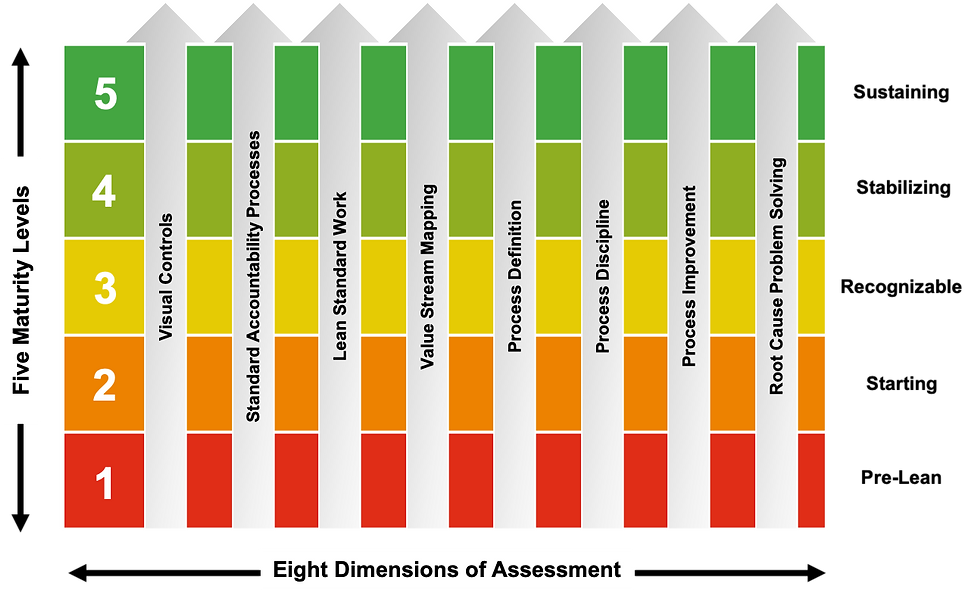Hybrid Work Efficiency: Best Practices for Maximum Productivity
- Allan Ung

- Mar 22, 2023
- 5 min read
Updated: Mar 20
by Allan Ung

Image credit: Wemanity
Introduction
The COVID-19 pandemic has drastically changed the way we work, leading to the rise of remote work as a necessity. However, as the world begins to recover and adjust to a new normal, the future of work is becoming increasingly clear: hybrid working is here to stay. Hybrid working offers a flexible model that combines remote work with in-person office work, providing a balance between the benefits of remote work and the advantages of working in a physical office.
What is Hybrid Working?
Hybrid working is a flexible work model that combines remote work with in-person office work. It allows employees to work from anywhere, while also maintaining some form of regular office attendance. This provides a balance between the benefits of remote work and the advantages of working in a physical office.
Benefits of Hybrid Working
The benefits of hybrid working are many. First, it provides increased flexibility, allowing employees to better balance work and personal life. It also attracts and retains a diverse range of talent, as it allows employees to work from anywhere. Hybrid working can also increase productivity, reduce costs, and promote better mental health and well-being.
Challenges of Hybrid Working from the Employer Perspective
1. Lack of control: Employers may worry that they won’t be able to monitor employees as closely in a hybrid work model, and may worry about productivity and performance.
2. Difficulty managing remote employees: Employers may worry about managing and communicating effectively with remote workers.
3. Inequality: Employers may worry about ensuring that all employees have access to the same resources and opportunities, regardless of their work location.
4. Maintaining company culture: Employers may worry about maintaining a cohesive company culture when employees are working in different locations.
5. Legal and compliance concerns: Employers may worry about legal and compliance issues related to remote work, including labor laws, data security, and taxes.
Challenges of Hybrid Working from the Employee Perspective
1. Isolation and loneliness: Employees may worry about feeling isolated or disconnected from their colleagues and the organization in a hybrid work model.
2. Difficulty separating work and personal life: Employees may worry about finding it difficult to maintain work-life balance in a hybrid work model, as work can easily intrude on personal time.
3. Unequal treatment: Employees may worry that remote workers will be treated differently or given less opportunities than on-site workers.
4. Communication and collaboration: Employees may worry about the challenges of communicating and collaborating with colleagues who are working in different locations.
5. Lack of clear boundaries: Employees may worry about the lack of clear boundaries between work and personal life in a hybrid work model.
Best Practices for Improving Productivity and Performance in a Hybrid Work Environment
To overcome the challenges of traditional hybrid work models, organizations must adopt best practices that improve productivity and performance in a hybrid work environment. Some of these best practices include:
1. Establish clear communication and collaboration channels
To ensure effective communication and collaboration in a hybrid workplace, it is essential to establish clear channels of communication and collaboration. This may include video conferencing, instant messaging, and project management tools that enable remote workers to stay connected with their team.
2. Define clear goals and expectations
To maintain productivity and performance in a hybrid work environment, it is essential to define clear goals and expectations for remote workers. This may include setting deadlines, defining project milestones, and establishing performance metrics that help remote workers stay on track.
3. Foster a culture of trust and accountability
To ensure equitable treatment for all employees in a hybrid workplace, it is essential to foster a culture of trust and accountability. This may include providing remote workers with the same opportunities for career development and advancement as in-person workers and ensuring that remote workers are included in important meetings and decision-making processes.
4. Provide access to technology and digital tools
To support hybrid working, it is essential to provide remote workers with access to technology and digital tools that enable them to work effectively from anywhere. This may include cloud-based collaboration tools, virtual private networks (VPNs), and project management software that enable remote workers to access information and collaborate with their team in real-time.
5. Encourage flexibility and work-life balance
To maintain productivity and performance in a hybrid work environment, it is essential to encourage flexibility and work-life balance. This may include providing remote workers with the flexibility to work flexible hours or from different locations and ensuring that they have access to the same benefits as in-person workers.
Adopting the Lean Daily Management System (LDMS) Approach to Enhance Productivity and Performance in a Hybrid Work Environment
The Lean Daily Management System (LDMS) is a powerful tool that can help organizations improve productivity and performance in a hybrid work environment. LDMS is a structured approach to daily management that enables teams to identify and solve problems in real-time. It provides a framework for tracking and monitoring progress, identifying areas for improvement, and developing action plans to address issues.
The LDMS approach is particularly well-suited for a hybrid work environment, as it emphasizes the importance of clear communication, collaboration, and accountability. By establishing clear goals and expectations for remote workers and providing them with the tools they need to track and monitor their progress, organizations can ensure that all employees are working towards the same objectives.
The LDMS approach also emphasizes the importance of regular communication and collaboration between team members, regardless of their location. By establishing clear channels of communication and providing remote workers with access to the same digital tools and technologies as in-person workers, organizations can ensure that everyone is able to collaborate effectively and work towards common goals.
Conclusion
In conclusion, the hybrid working model has become a practical solution for organizations seeking to maintain a balance between productivity and employee flexibility. However, the adoption of this model presents some inherent challenges that can be addressed through best practices such as effective communication, clear expectations, trust-building, access to technology, and encouraging work-life balance. Furthermore, the LDMS can provide an effective framework for managing daily operations, improving productivity, and performance in a hybrid work environment. By emphasizing real-time problem-solving, communication, collaboration, and accountability, LDMS offers a structured approach to enhance the efficiency and effectiveness of remote teams. In summary, the successful implementation of a hybrid work model requires a strategic approach and a commitment to implementing best practices, such as LDMS, that enable organizations to thrive in the ever-evolving work landscape.

Article by Allan Ung, Principal Consultant at Operational Excellence Consulting, a distinguished management consultancy based in Singapore. Our firm specializes in maximizing customer value and minimizing waste through the strategic adoption of Design Thinking and Lean management practices. For further details, please visit www.oeconsulting.com.sg




























Comments